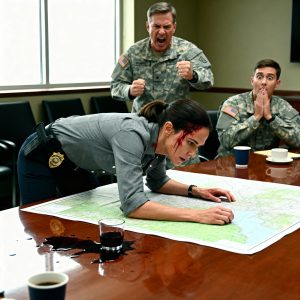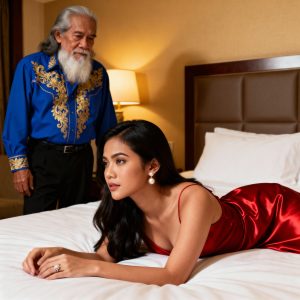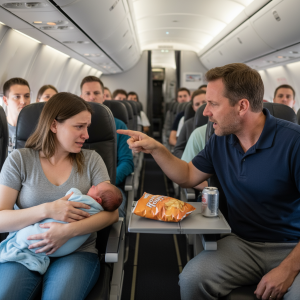Vladimir Putin’s distinctive walking pattern, dubbed the “gunslinger’s gait” by neurologists, reveals how his KGB training continues to influence his body language decades later.
When Vladimir Putin walked alongside Donald Trump during their recent high-profile meeting in Alaska, careful observers noticed something peculiar about the Russian president’s stride. While one arm swung naturally with his steps, the other remained rigidly positioned at his side—a detail that reveals far more about Putin’s background than most people realize.
This distinctive walking pattern, which neurologists have dubbed the “gunslinger’s gait,” offers a fascinating window into how decades-old training can become permanently embedded in a person’s physicality, even during the most crucial diplomatic moments.
The Meeting That Captured Global Attention
The Trump-Putin summit in Alaska marked a pivotal moment in international relations, as the two leaders sought to negotiate a potential ceasefire in the ongoing Ukraine conflict. The meeting, held against the backdrop of a war now well into its third year, carried enormous stakes—with the potential to save countless lives hanging in the balance.
As the two presidents walked side by side down the red carpet toward their historic discussion, the world watched with intense scrutiny. Every gesture, every movement was analyzed for diplomatic significance. While Trump’s somewhat erratic walking pattern after disembarking his aircraft drew attention, Putin’s consistently unusual gait sparked curiosity among body language experts and political observers.
The footage clearly shows Putin’s left arm moving in natural rhythm with his steps, while his right arm remains largely motionless at his side, creating an asymmetrical walking pattern that appears both deliberate and deeply ingrained.
The Science Behind the ‘Gunslinger’s Gait’
This isn’t merely speculation or casual observation. In 2015, a team of neurologists published a comprehensive study in the British Medical Journal that specifically examined Putin’s walking pattern and identified it as a documented phenomenon. The researchers coined the term “gunslinger’s gait” to describe this distinctive way of moving.
The study’s findings were both fascinating and unsettling. The researchers discovered that this walking pattern wasn’t a natural development or medical condition, but rather a deliberately trained behavior with roots in Soviet-era intelligence training.
According to the neurological team’s research, the unusual gait stems directly from KGB operational manuals that Putin would have studied during his 16-year career with the Soviet intelligence agency. These training documents specifically instructed operatives on how to position their bodies while moving, prioritizing tactical readiness over natural movement.
KGB Training: Where Muscle Memory Meets Espionage
The KGB manual referenced in the study outlined a specific walking technique designed for optimal weapon deployment. Operatives were taught to keep their dominant hand—typically the right—close to their chest area where a concealed weapon would be positioned. This allowed for the quickest possible draw when confronted with threats.
The left side of the body was instructed to move naturally, creating forward momentum while maintaining the right arm’s tactical positioning. This creates the distinctive asymmetrical movement pattern that Putin displays decades after leaving intelligence work.
This training wasn’t unique to Putin. The researchers expanded their study to examine other Russian officials with KGB backgrounds, discovering that many exhibited similar walking patterns. The prevalence of this gait among former Soviet intelligence operatives suggests it was a standard part of their physical conditioning.
The Persistence of Physical Training
What makes Putin’s case particularly striking is how this trained behavior has persisted long after its practical necessity ended. Putin transitioned from KGB work to politics decades ago, yet his body continues to demonstrate the physical habits drilled into him during his intelligence career.
This phenomenon speaks to the profound impact of intensive physical training on the human body. Just as military personnel often maintain their bearing and movement patterns years after service, Putin’s walking style reflects the permanent imprint of his intelligence training.
The fact that this gait appears even during high-pressure diplomatic situations—when one might expect heightened self-awareness about body language—suggests how deeply embedded these patterns have become in his muscle memory.
Broader Implications for Understanding Putin
The persistence of Putin’s gunslinger’s gait offers insights into how his KGB background continues to influence his approach to leadership and international relations. If decades-old physical training remains so ingrained, it raises questions about how other aspects of his intelligence background might shape his decision-making processes.
This physical manifestation of his past training serves as a constant reminder of Putin’s origins in the world of espionage and covert operations. In a sense, his body language broadcasts his background to anyone knowledgeable enough to recognize the signs.
For diplomatic observers and foreign policy analysts, such details can provide valuable context when interpreting Putin’s behavior and motivations. Understanding that he continues to physically embody his intelligence training helps illuminate the lens through which he may view international relationships and conflicts.
As President Trump and Russian President Putin meet in Alaska, former U.S. Ambassador to the Organization for Security and Cooperation in Europe Daniel Baer explains why the terms of any ceasefire deal would be critical to lasting peace. pic.twitter.com/0UvYxQmuqE
— ABC News Live (@ABCNewsLive) August 15, 2025
The Current Diplomatic Context
The Alaska meeting where this gait was most recently observed carried enormous significance for global peace efforts. Putin reportedly used the opportunity to demand that Ukraine officially cede the territories of Donetsk and Luhansk to Russia—a position that underscores the continuing challenges in reaching a peaceful resolution to the conflict.
Following the Putin meeting, Trump was scheduled to meet with Ukrainian President Volodymyr Zelenskyy, highlighting the complex diplomatic dance required to navigate between the competing demands of the warring parties. While Trump described the talks with Putin as making “great progress,” no concrete ceasefire agreement emerged from the discussions.
The stakes of these diplomatic efforts cannot be overstated. With the conflict now in its third year and tens of thousands of lives already lost, any potential breakthrough could have profound humanitarian implications. Yet the persistence of entrenched positions on both sides continues to complicate peace efforts.
Reading Between the Lines of Body Language
Putin’s gunslinger’s gait serves as a fascinating case study in how physical training can become permanently embedded in a person’s presentation. While most people’s body language evolves naturally over time, highly specialized training can create lasting patterns that persist for decades.
For intelligence professionals and diplomatic observers, such details provide valuable information about an individual’s background and potential mindset. In Putin’s case, his walking pattern serves as a visible reminder of his intelligence background, even in settings far removed from his KGB days.
This physical manifestation of his past training adds another layer to understanding one of the world’s most scrutinized leaders. While much attention focuses on Putin’s words and official actions, his involuntary body language provides insights into aspects of his character that formal diplomacy might not reveal.
Conclusion: When the Past Shapes the Present
Vladimir Putin’s distinctive walking pattern offers a unique window into how formative training experiences can leave permanent marks on an individual’s physical presentation. The gunslinger’s gait, rooted in Soviet-era intelligence training, continues to manifest decades later during some of the most important diplomatic moments in recent history.
As global leaders continue to grapple with the ongoing conflict in Ukraine and seek pathways to peace, every detail of their interactions takes on heightened significance. Putin’s body language, shaped by his KGB past, serves as a constant reminder of the complex backgrounds and perspectives that world leaders bring to crucial negotiations.
Understanding these subtle aspects of leadership presentation can provide valuable context for interpreting international relations and the individuals who shape global events. In Putin’s case, his walk tells a story of training that runs so deep it has become inseparable from his public persona, offering insights into the man behind one of the world’s most consequential political positions.





